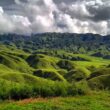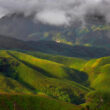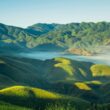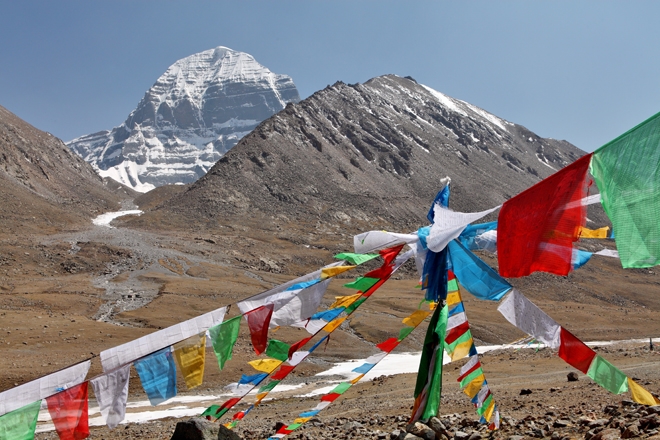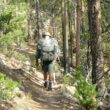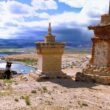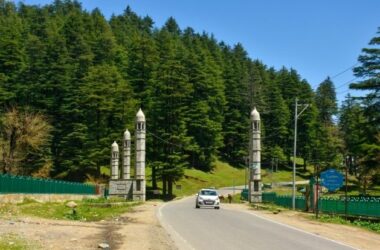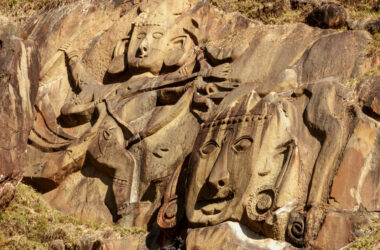Are you an adventure enthusiast planning to embark on the mesmerizing Kailash Mansarovar trek? Nestled in the majestic Himalayas, this pilgrimage site attracts thousands of trekkers every year. While the journey promises breathtaking vistas and spiritual enlightenment, it’s crucial to prioritize safety during this challenging expedition. In this article, we will explore essential safety precautions to ensure a memorable and secure trekking experience.
Introduction
The Kailash Mansarovar trek is a sacred journey, often regarded as a once-in-a-lifetime opportunity for many devotees and adventure seekers. Located in the remote corners of the Himalayas, the trek demands careful planning, physical fitness, and adherence to safety guidelines. By understanding the importance of safety precautions, you can mitigate risks and fully enjoy the beauty and spirituality of this remarkable trek.
Understanding the Importance of Safety Precautions
Safety precautions are the cornerstone of any successful trek, especially in rugged and high-altitude environments like Kailash Mansarovar. Prioritizing safety ensures the well-being of trekkers, reduces the likelihood of accidents, and enables a smooth journey. Whether you are an experienced trekker or a first-time adventurer, it is vital to familiarize yourself with safety measures specific to this unique trek.
Preparing for the Kailash Mansarovar Trek
Before embarking on the Kailash Mansarovar trek, thorough preparation is key. Here are some essential steps to ensure a safe and enjoyable journey:
Physical Fitness and Health Check
Maintaining good physical fitness is crucial for conquering the challenges of the trek. Engage in regular exercise and endurance training in the months leading up to the trek. Additionally, consult with a healthcare professional for a comprehensive health check-up to assess your fitness level and identify any underlying conditions that may require attention.
Acclimatization and Altitude Sickness
As you ascend to higher altitudes during the trek, the risk of altitude sickness increases. Acclimatization is vital to allow your body to adjust gradually. Follow the recommended acclimatization schedule, ascend slowly, and stay hydrated. Familiarize yourself with the symptoms of altitude sickness, such as headaches, nausea, and dizziness, and take appropriate measures if they occur.
Packing Essential Gear and Supplies
Proper packing ensures you have all the necessary gear and supplies for a safe and comfortable trek. Items such as sturdy hiking boots, warm clothing, sunscreen, a first aid kit, and a reliable trekking backpack are essential. Prepare a detailed checklist and double-check your equipment before setting off.
Route Selection and Weather Considerations
Choosing the right route for your Kailash Mansarovar trek is vital for safety and enjoyment. Research various routes, consider weather conditions during different seasons, and assess the difficulty level. Opt for a route that aligns with your trekking experience, physical capabilities, and the time available.
Hiring a Professional Guide or Joining a Group
Considering the remote and challenging nature of the Kailash Mansarovar trek, it is advisable to hire a professional guide or join a reputable trekking group. Experienced guides are well-versed in the terrain, weather patterns, and safety procedures. They can provide valuable guidance, enhance your trekking experience, and ensure your safety throughout the journey.
Navigation and Communication Tools
Carry navigation tools such as a compass, map, and GPS device to stay on track during the trek. Familiarize yourself with their usage before the expedition. Additionally, ensure you have reliable communication tools like a fully charged mobile phone or a satellite phone to reach out for help in case of emergencies.
Camping and Accommodation Tips
During the Kailash Mansarovar trek, camping is the primary mode of accommodation. It is essential to set up your camp in safe locations away from potential hazards. Choose flat ground, away from water bodies, and secure your tent properly. Familiarize yourself with basic camping techniques and safety guidelines to ensure a comfortable and secure camping experience.
Hydration and Nutrition on the Trek
Staying hydrated and well-nourished is crucial for maintaining energy levels and combating altitude-related challenges. Drink plenty of water and carry water purification tablets or a filter. Pack lightweight, high-energy snacks and meals that provide essential nutrients. Consult a nutritionist for guidance on a balanced diet suitable for the trek.
Clothing and Equipment for Various Weather Conditions
The weather in the Himalayas can be unpredictable, ranging from scorching sun to freezing temperatures. Pack appropriate clothing layers to adapt to changing weather conditions. Dress in breathable, moisture-wicking fabrics and wear insulating layers to stay warm at higher altitudes. Additionally, invest in quality trekking gear, including waterproof jackets, gloves, and headgear.
Dealing with High Altitude Challenges
As you venture into higher altitudes, it is crucial to be aware of the challenges posed by reduced oxygen levels. Here are some important considerations:
Recognizing and Managing Symptoms of Altitude Sickness
Altitude sickness can affect trekkers at high altitudes. Familiarize yourself with the symptoms, such as headache, nausea, and fatigue. If symptoms persist or worsen, descend to lower altitudes and seek medical assistance. Acclimatization and proper hydration greatly reduce the risk of altitude sickness.
Emergency Procedures and Safety Protocols
It is essential to be prepared for emergencies. Educate yourself on emergency procedures, including rescue operations and evacuation routes. Carry a comprehensive first aid kit and learn basic first aid techniques. Stay informed about the nearest medical facilities and communicate your itinerary to a reliable contact.
First Aid and Medical Assistance
Accidents and minor injuries can occur during the trek. Equip yourself with a well-stocked first aid kit and know how to administer basic first aid. Attend a wilderness first aid course to enhance your knowledge and confidence in handling medical emergencies. Additionally, carry any necessary prescription medications and consult your healthcare provider for specific advice.
Environmental Responsibility and Leave No Trace Principles
Preserving the pristine environment of the Himalayas is paramount. Practice Leave No Trace principles by minimizing your impact on nature. Avoid littering, dispose of waste responsibly, and respect the flora and fauna. Be mindful of cultural and religious sites, following local customs and traditions.
Wildlife and Nature Encounters
The Kailash Mansarovar region is home to a diverse range of flora and fauna. Respect the natural habitats of animals and birds. Admire wildlife from a safe distance, avoid feeding them, and do not disturb their natural behavior. Familiarize yourself with any potential risks associated with encounters with wildlife.
Cultural Sensitivity and Respect for Local Customs
The Kailash Mansarovar trek holds immense cultural and religious significance for pilgrims. Respect local customs, traditions, and beliefs. Seek permission before entering sacred sites and follow the guidelines provided by authorities. Engage with the local community in a respectful manner, embracing the rich cultural heritage of the region.
Tips for a Safe and Enjoyable Kailash Mansarovar Trek
To ensure a safe and enjoyable Kailash Mansarovar trek, consider the following tips:
- Stay hydrated by drinking plenty of water throughout the trek.
- Pace yourself and take regular breaks to rest and acclimatize.
- Listen to your body and be aware of any signs of fatigue or altitude sickness.
- Always trek with a partner or in a group for added safety.
- Stay informed about weather forecasts and plan your trek accordingly.
- Respect the instructions of your guide and follow their advice.
- Carry extra batteries and power banks to ensure your communication devices remain charged.
- Pack light but include essential items for comfort and safety.
- Be prepared for changes in weather and carry appropriate clothing layers.
- Maintain a positive attitude and savor every moment of this unique spiritual journey.
Conclusion
The Kailash Mansarovar trek is a remarkable adventure that offers breathtaking beauty and spiritual fulfillment. By prioritizing safety and adhering to essential precautions, you can ensure a secure and memorable experience. Remember to prepare adequately, stay informed, and respect the environment and local customs. Embrace the challenges and rewards of the trek while forging lifelong memories on this sacred pilgrimage.
Similar Articles
- Packing List for Kailash Mansarovar Trek
- Travel Tips for Kailash Mansarovar
- Tales of Kailash Mansarovar
Frequently Asked Questions About Safety Precautions for Kailash Mansarovar Trek
1. Is it safe to trek to Kailash Mansarovar for beginners or those with limited trekking experience?
Trekking to Kailash Mansarovar requires a certain level of physical fitness and endurance due to its challenging terrain and high altitudes. It is advisable for beginners to undergo proper training and gain some trekking experience before attempting this trek. Consulting with experienced guides or joining a reputable trekking group can enhance safety and support for less-experienced trekkers.
2. How can I prepare myself to deal with the high altitudes during the Kailash Mansarovar trek?
Preparing for high altitudes is crucial to mitigate the risk of altitude sickness. Prioritize physical fitness through regular exercise and endurance training. Gradual acclimatization is key, so ascend slowly and take ample rest breaks. Staying well-hydrated, eating nutritious meals, and following a proper acclimatization schedule will greatly help in adapting to the high altitudes.
3. What is the best time of the year to undertake the Kailash Mansarovar trek?
The best time for the Kailash Mansarovar trek is during the pre-monsoon and post-monsoon seasons, which are generally from May to June and September to October respectively. During these periods, the weather is relatively stable with clear skies and manageable temperatures. However, it is essential to check weather forecasts and consult local authorities for the most accurate and up-to-date information.
4. Are there any age restrictions for the Kailash Mansarovar trek?
There are no strict age restrictions for the Kailash Mansarovar trek, but it is important to assess your physical fitness and consult with a healthcare professional, especially for older individuals or those with pre-existing medical conditions. The trek can be physically demanding, so it is advisable to undergo a thorough health check-up and discuss any concerns with a medical expert before planning the trek.
5. Are there any risks from wildlife encounters during the Kailash Mansarovar trek?
While wildlife encounters are relatively rare during the Kailash Mansarovar trek, it is important to respect the natural habitat of the region’s flora and fauna. Maintain a safe distance from wild animals, avoid feeding them, and refrain from any actions that may disrupt their behavior. Following these guidelines and being aware of any potential wildlife risks will ensure a harmonious coexistence with nature during the trek.
6. Can I undertake the Kailash Mansarovar trek without a guide or trekking company?
While it is technically possible to trek to Kailash Mansarovar independently, it is highly recommended to hire a professional guide or join a reputable trekking company. The remote and challenging nature of the trek, coupled with the cultural and spiritual significance of the region, makes having a guide invaluable. They provide expertise, ensure safety, and navigate the intricacies of the trek effectively.
7. Are there any specific permits required for the Kailash Mansarovar trek?
Yes, undertaking the Kailash Mansarovar trek requires several permits. These include a Tibet Travel Permit, Alien Travel Permit, and Military Permit. These permits are obtained through a registered tour operator or travel agency that specializes in organizing Kailash Mansarovar treks. It is essential to plan in advance and ensure all the necessary permits are obtained before starting the trek.
8. How physically demanding is the Kailash Mansarovar trek?
The Kailash Mansarovar trek is physically demanding due to its high altitude and challenging terrain. Trekkers can expect steep ascents, descents, and long hours of walking. Adequate physical fitness and stamina are crucial for completing the trek comfortably. Regular exercise, endurance training, and prior trekking experience will greatly help in preparing for the physical demands of the journey.
9. What safety measures are in place during the Kailash Mansarovar trek?
To ensure safety during the Kailash Mansarovar trek, several measures are typically in place. Professional trekking companies employ experienced guides who are trained in first aid and emergency procedures. They also provide safety equipment, conduct thorough risk assessments, and maintain communication with local authorities. It is important to choose a reputable trekking company that prioritizes safety and has a proven track record.
10. How can I contribute to the preservation of the Kailash Mansarovar region’s natural and cultural heritage?
Preserving the natural and cultural heritage of the Kailash Mansarovar region is crucial. As a responsible trekker, you can contribute by practicing Leave No Trace principles, respecting local customs and traditions, and minimizing your environmental impact. Avoid littering, respect wildlife and vegetation, and engage in sustainable tourism practices. By doing so, you can help preserve the beauty and integrity of the region for future generations.

